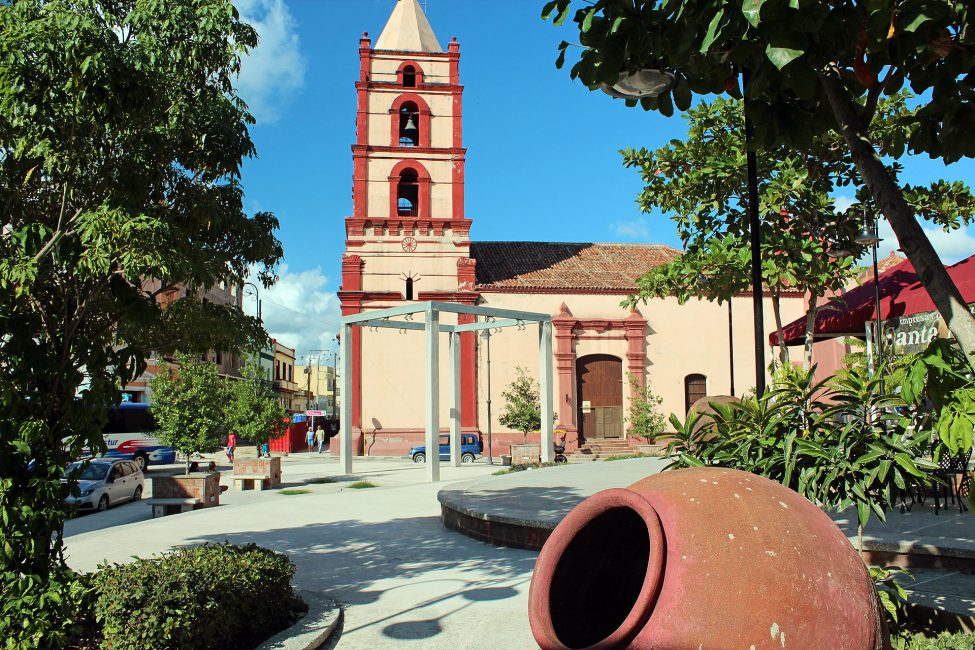Soon, every traveler visiting Cuba will be able to tour the entire Island , including its most beautiful and of highest patrimonial value cities, by the hand of Melia. To the current proposal, which includes 27 resorts placed in the main beaches, keys and touristic areas of the country and also the greatest facilities in Havana and Santiago, will be added three new urban destinations, main components of the Cuban soul, history and culture.
The three cities have marvelous historical centers, which were declared World Heritage venues years ago by the UNESCO. The colonial- style Trinidad and Camagüey (two of the first seven villages emerged in Cuba between 1511 and 1515) and the French-style and neoclassic Cienfuegos, also known as la Perla del Sur and founded in 1819 by 50 families from Burdeos, New Orleans and Haiti on the edge of the bay of Jagua. These features will magnify and enrich our commitment with the Largest of the Antilles.
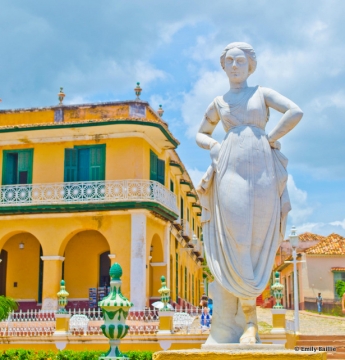
High architectural and patrimonial valued establishments like the hotels San Carlos, La Union and El Jagua in Cienfuegos and the Gran Hotel and Colón in Camagüey , places which along with the palaces , churches and squares are important part of life and history of these cities, will be repaired and managed by Melia.
In addition, establishments built after 1959 like the Hotel Camagüey, located on the fields of the former state property of Villa Angela ,4 kilometers from the center of the city , will be remodeled. The new and modern Melia Trinidad will be built in the Maria Aguilar beach, at the beginning of the privileged Ancon Peninsula, only 12 kilometers away from the best preserved colonial city in Cuba.
In some of these establishments, Melia will work with Islazul , the only Cuban touristic company which up until now Melia had not work with , enlarging the scope of its operations in the business with these cooperation.
After almost 30 years of experience in Cuba and our presence in Havana, Santiago and in the main destinations of beach and sun, like Varadero, Cayo Santa Maria, Cayo Coco, Cayo Guillermo, Cayo Largo and the Esmeralda Beach, our arrival to these emblematic cities through facilities filled with history gives us a complete satisfaction and regenerates our will of promoting the great patrimonial, architectural and cultural wealth of Cuba, a unique wealth in the Caribbean.
The tradition, the history and the modernity will be combined in the soon-to-be Melia Resorts in Cienfuegos, Trinidad and Camagüey, which are already key pieces in the purpose of encouraging new cultural circuits throughout the island.
Two historical jewels at la Perla del Sur
The Hotel La Union in Cienfuegos, a neoclassic-style jewel was built on two lots , which were property of the rich farmer Tomas Terry –last name closely related to the history and splendor of the city- in the second half of the XIX century and rises a few meters away from the park Jose Marti , former Arms Square, the place from which Felix Bouyon draw the first 25 blocks of the village taking as a reference, the immense majagua, which sheltered the protagonists of the foundational ceremony.
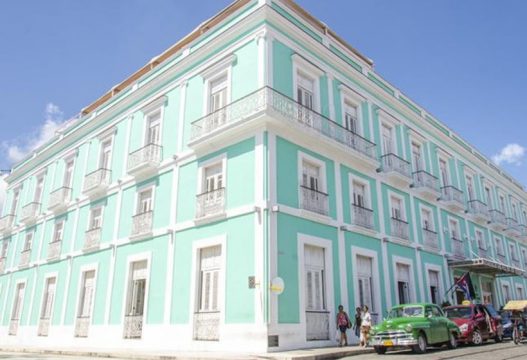
The establishment of three floors and one inner garden viewable from all its rooms and suites, has an important past because in one of its rooms in December 15th ,1985 the General Captain of the Island, Arsenio Martinez Campos, received the news of the defeat of the Spanish troops in the battle of Mal Tiempo and for that reason he left immediately trying to stop the approach of the mambi army towards Occidente, action that was leaded by the independentist General Maximo Gomez. Other important characters like the Russian dancer Ana Pavlova, the world Chess Champion Jose Raul Capablanca and the close Jose Marti’s collaborator Juan Gualberto Gomez stayed at the hotel.
Not far away from La Union rises another classic, the emblematic Hotel San Carlos, built in the 20’s by the rich local Antonio Mata, who was also owner of the Hotel Ciervo de Oro in the street with that same name, which radically changed the physiognomy of this city of perfect rectilinear and grid network-like tracing, just like a big chessboard. The Hotel San Carlos, just like its contemporary La Union, was inspired by the precious concepts of the Neoclassic and its order and geometric strictness still captivate the travelers.
Both facilities were signs of the hostelry of the former Las Villas Province back in the 50’s and yet today they remain symbols given their architectural and patrimonial value and their location in the very heart of the historical center, a few streets away from the legendary Terry Theater, always a reference of the city with its fresco paintings and its interiors transferred from Italy. The great performing of Enrico Caruso, in June 19th , 1920 it is still remembered since that day the orchestra sections and the boxes reached the fabulous amount of 400 Pesos.
Coming out from any of the two hotels, the traveler is minutes away from the most precious jewels of the city: The Purisima Concepcion Cathedral, with its neoclassic facade with pediments crowning the pilasters- framed accesses ; the old Spanish Casino ,a beautiful eclectic building from the end of the XIX century which is now headquarter of the Provincial Museum and shows an outstanding collection of Decorative Arts; the Café Palatino with its portal hanging to the street of San Fernando and its influences of the architecture from Trinidad; the Arc of Triumph ,unique in Cuba and lifted in 1902 by the local worker organization in honor to the rising Republic or the Colegio San Lorenzo and the Ferrer Palace, another distinguished eclectic building, whose highlight is its dome/ viewer finished with joyful mosaics , a place where Caruso stayed on his visit to this amazing city.
The Hotel Jagua and the Palace of the Valley
The Hotel Jagua , built at the end of the 50’s in the gardens of the astonishing little palace of the rich farmer Acisclo del Valle, rises at the end of the Malecon in the residential area of Punta Gorda, a zone of high scenic value in the city. The establishment is a real symbol, not just because it was the first hotel inaugurated after the Revolution – with as much as a banquet offered to the Leones de Cuba Club on December 28th, 1959- but because it is considered one of the top three works of the Modern Movement of Cienfuegos and well-known among the representative buildings of Cienfuego’s Architecture of all times.
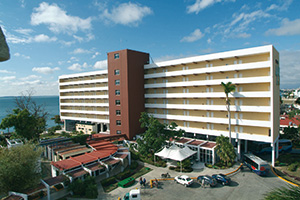
The Jagua Hotel, next to the Palace of the Valley and the aristocratic nearby properties of the Blue Palace, the Green House and The Pearl will turn into a modern and exclusive Innside by Melia Complex, where the respect for the identity and the original architecture will be combined with the greatest comfort and luxury in one of the most beautiful areas of the city of Cienfuegos.
The reactivation of the Palace of the Valley is key piece in our effort. The place is a spectacular two floors property built between 1913 and 1917 by one of the richest men of the center of the country. The merchant gathered the best Cuban and foreigner artist and architects, including the Italian Alfredo Colli, the Spanish wood-carver Antonio Barcenas, blacksmiths and first class painters like Frank Palacios and Miguel Lamoglia, to build the Palace. Acisco del Valle y Blanco barely enjoyed the place, because he died of a heart attack on a fatal day of 1919, when he found out of the irreversible trend of the fall in the sugar prices, a trend which would lead him to ruin.
When his widow and his eight children flew to Spain, the Palace was managed by his Catalan servant Maria de Covadonga and finally sold to a society of the dictator Fulgencio Batista in the mid 50’s , who wanted to turn the Palace into a Casino associated to the Hotel Jagua, which was then at the end of its construction. This purpose was rapidly ruled out in 1959 and a school of Plastic Arts under the direction of the distinguished sculptor Mateo Torriente was settled instead.
The Hotel Jagua and the Palace of the Valley , along with the Hotel San Carlos and La Union are part of that rich architectural and cultural heritage of Cienfuegos , which Melia wishes to contribute rehabilitating.
Camagüey and Trinidad, unique witnesses of a colonial past
Camagüey and Trinidad are the two Cuban cities which best preserve their essence and colonial looking. This is largely due to their location, far from the center of the Island. Until 1903, time when the railway from Santa Clara to Santiago de Cuba began to work (before that, the train reached only Santa Clara) and while the construction of the Central Road was not over (1931), Camagüey was preserved nearly intact and because of that isolation , the city , next to Trinidad, is today a jewel of the Hispanic Architecture in Latino America . This is why the centers of both cities were declared World Heritage by the UNESCO.
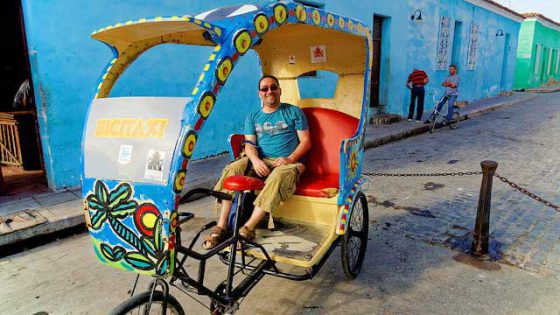
Trinidad (1514) and Camagüey (1515) are part of that solid core of the first seven villages founded by the Spanish in Cuba – Baracoa, Santiago de Cuba, Bayamo, Sancti Spíritus and La Habana are the others- If that past were not relevant enough , there is always the exceptional wealth of their colonial buildings and the unpredictable urbanization of both villages, full of twist and turns, narrow little streets, cobbled streets , parks and squares of singular beauty and everything set in the style of the sugar and stockbreeding opulence era (in the case of Camagüey).
This priceless historic and cultural patrimony brings back to the memory the Spanish past of the Island, in which the old and traditional and also the modern trends are presented in the same stage. It is in the spirit of Melia to reach these special destinations through hotels filled with history , and by doing this we intend to upgrade even more our offer.
Two symbols of Camagüey: Colon and the Gran Hotel
Figures from the well-known Polish Musician Artur Rubinsteín to characters from the mob like the North American Charles Lucky Luciano passed by the Gran Hotel, which was inaugurated with great honors in 1938 and it is still today one of the emblematic buildings of the city and part of its architectonical patrimony next to the streets, public buildings , churches, monuments museums and squares. The establishment, which was for years symbol of the touristic brand Islazul in Camagüey, has a privileged location in the historic center and staying at the hotel means the opportunity of diving into the past of this city which was born of the mud used to make the bricks from which the first houses were built. The famous tinajones of the city were molded and used to collect rain water and around 16.000 of them existed in Camagüey at the beginning of the XX century.
Tinajones, roof tiles and cooked brick walls give that red color shade to Camagüey, the same color from which the National Cuban Poet Nicolas Guillen spoke. The poet is part of the essence of the city as much as the Gran Hotel or the space where a planted cross indicates the place in which the city was raised ,in the current General Gomez street , the heart of a marvelous historic center assembled by 2843 properties and incredible squares like San Juan de Dios, del Carmen, de los Trabajadores or de la Soledad.
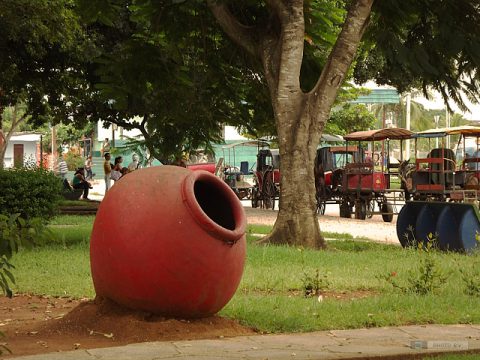
Overall, the surface owns a dozen squares, small squares and six churches, all of them very close to the hotel, from which everything can be visited by foot, even the Casino Campestre, the most extensive urban park in Cuba. Similar to this is the Hotel Colon, built in 1926 and also a reference because of the carpentry work with precious woods performed in its interiors. Both establishments are to be renovated now , always preserving their style and the spirit of a city proud of its one-tower temples , its elegant facades with dust protection and pilasters and its houses of inner patios and red roof tiles, all signs of a sober and at the same time striking architecture located in a real maze of alleys.
In the outskirts of the city, but only 4 kilometers away from the center, the Hotel Camagüey will be submitted to a capital reform to turn it into an Innside By Melia , with comfort and charm from where we could visit this magic city, the capital of the biggest Cuban Province.
Trinidad, between the beach and the Colony
Few can be said that has not been said already about the five centuries of history of Trinidad, the third of the villages founded in Cuba (1514) by the Conqueror Diego Velázquez de Cuellar in the chiefdom of Manzanilla, declared World Cultural Heritage in 1988 along with the nearby Valle de los Ingenios because it treasures one of the most beautiful and best preserved architectural sets of the Hispanic colonization in America.
Cobblestones, stones, bars, high windows reaching the streets, palaces and red roof tiles framed through narrow streets and majestic spaces like the one in Plaza Mayor, built in an unbalanced way and where the parochial Mayor and dominical Brunet Palace are highlights, are signs of identity of this museum-city , eternal witness of other ages, with its impeccable constructions of XVIII and XIX centuries as a result of the sugar opulence.
Walking around Trinidad is like traveling in time and traveling to the times of the Colony. This is one of the most attractive things, along with the pastel colors of its houses which reinforce the tropical environment of this city raised by the feet of the Escambray mountains and with the sea as background.
Trinidad combines the luxury of its past, its architecture and its history with its privileged location, only a few kilometers away from the heavenly Ancon Peninsula, with one of the greatest beaches on the Cuban South Coast, in the middle of the Caribbean Sea. Right there, where the peninsula begins, in the so-called Punta de Maria Aguilar and near the nice fishing town of La Boca, will be placed the modern hotel Melia Trinidad as a green emerald watchtower, from where the visitor could quickly travel to the little squares, big houses and wonderful cobbled streets of this dreamlike colonial city , so impossible to forget.

